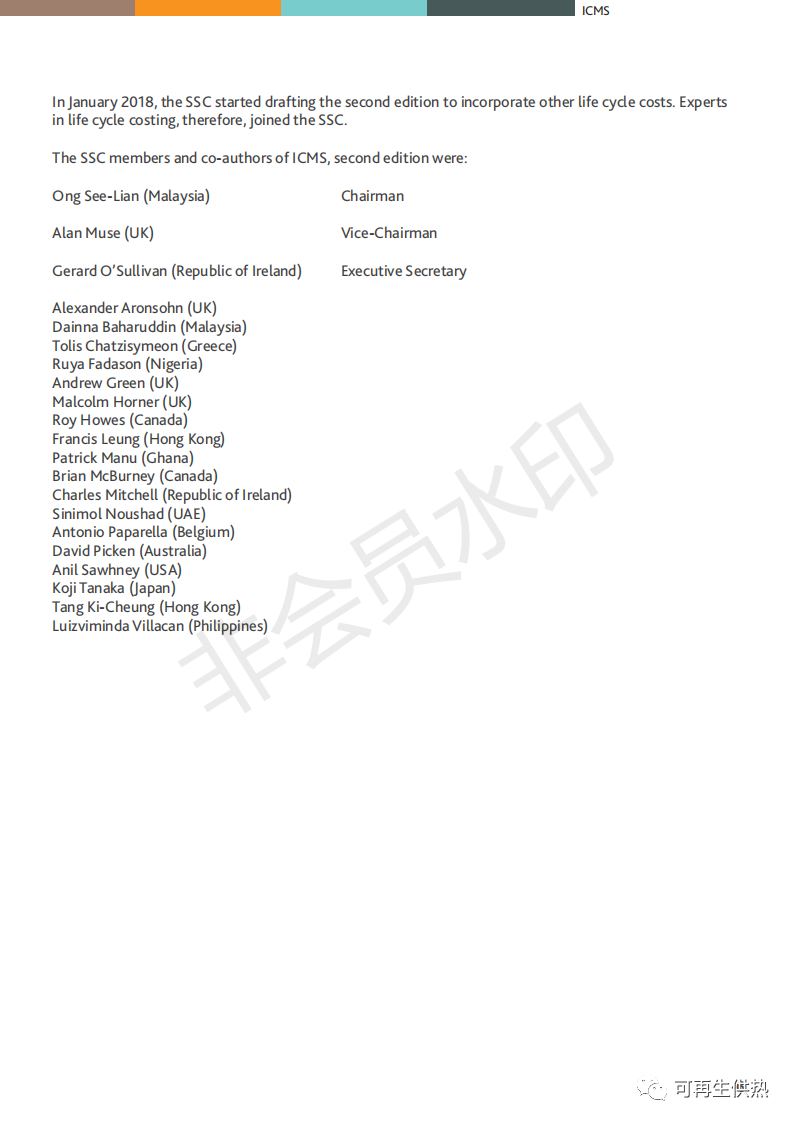

The second part puts forward the hierarchical structure framework.

Therefore, those familiar with the second edition will find that the third edition is almost indistinguishable except for the expansion of carbon emissions and project types.




Although the same acronym is retained, it reflects the broader scope of its content.

So far, it has included large public sector project sponsors, global cost consultants, builders and other stakeholders in the construction sector.



ICMs does this by requiring attribute expressions for each project and subproject.
ICMs only focuses on issues directly related to the costs and carbon emissions associated with construction projects and construction assets in order to benchmark cross-border performance and determine the reasons for the differences.



The second edition of ICMs expands the scope of the first edition to include life cycle costs, reflecting their key role in the financial management of construction projects around the world.




By providing a common reporting framework for life cycle costs and carbon emissions, ICMs can explore the relationship between them and provide an opportunity to make decisions on the design, construction, operation and maintenance of the built environment to improve environmental sustainability.
Therefore, the goal of ICMs is to provide global consistency in the classification, definition, measurement, recording, analysis, presentation and comparison of the whole life cycle costs and carbon emissions of construction projects and construction assets at the regional, state, national or international level.
Since its establishment, the driving principle behind ICMs has been that demonstrating the performance of construction projects around the world will bring significant benefits to the management of the performance of construction projects.
Therefore, when comparing one item with another, the similarity of its attributes should be checked and necessary adjustments should be made to explain any differences.
For ICMs, a key element is that ICMs will be compatible and comply with IPMS standards.
When comparing the performance of construction projects and cross-border, it must be compared with similar projects.





However, the structural framework of ICMs remains unchanged and allows comparison with capital reports and other life cycle cost reports prepared in accordance with versions 1 and 2.


The third edition recognizes the importance of reducing greenhouse gas emissions if disasters caused by global climate change are to be avoided.




ICMs provides an advanced structure and format for classifying, defining, measuring, recording, analyzing and presenting life cycle costs and carbon emissions related to construction projects and construction assets.

The globalization of the construction industry has only increased the need for such meaningful comparative analysis among countries, especially in international organizations such as the World Bank Group, the International Monetary Fund, regional development banks, non-governmental organizations and the United Nations.
In ICMs, greenhouse gas emissions are measured by carbon dioxide (carbon dioxide) equivalent.




Since 2017, ICMs has been adopted as the performance benchmark of several well-known institutions in the international market.
Global consistency of building life cycle cost and carbon emission introduction the research of the world economic forum shows that the design and construction process can be improved by using international standards such as ICMs to obtain comparable and consistent data.


It is important to understand the scope of ICMs: what it covers and what it does not cover.

ICMs provides a high-level framework for classifying, defining, measuring, recording, analyzing, proposing and comparing life cycle costs and carbon emissions.
In view of these changes, the ICMs alliance decided to change the name of ICMs to “international cost management standard”.
ICMs project follows the development of international property measurement standards (IPMS).



For simplicity, it has been called “carbon emissions”.
ICMs is an advanced classification system.
It also covers the life-cycle costs and carbon emissions generated during the whole life cycle of the construction project, but does not include the whole life-cycle costs and life-cycle carbon emissions.
However, it does need to explain the calculation method so that at least local comparison can be made For the report, please add wechat 583769685..


IPMS has developed standards for measuring building area.






Finally, ICMs is a reporting system: it does not support describing how costs or carbon emissions are calculated, as the calculation methods vary from country to country, although reference is made to other publications that may obtain this information.
It covers construction and civil engineering, but does not include the current process industry (although factories and their production equipment can be reported as buildings).



They are listed in part 3.




Properties are used to capture those features of the build project and the context that may affect its performance.
It has four levels.



This will promote consistency and transparency across international borders.






